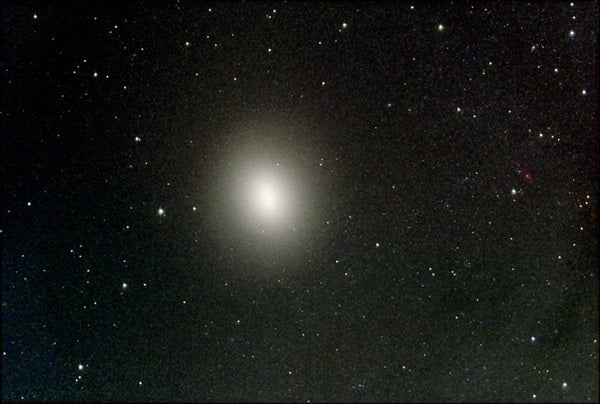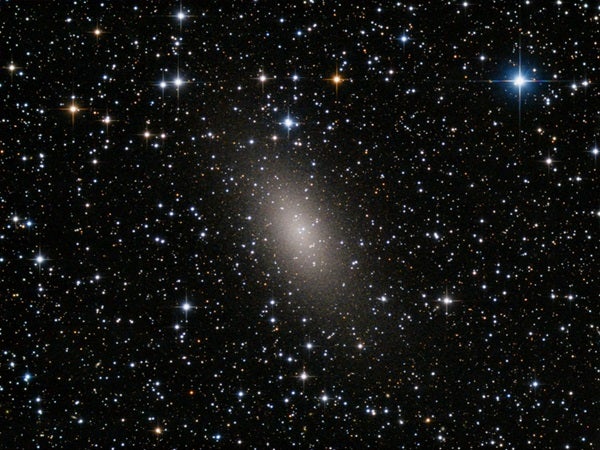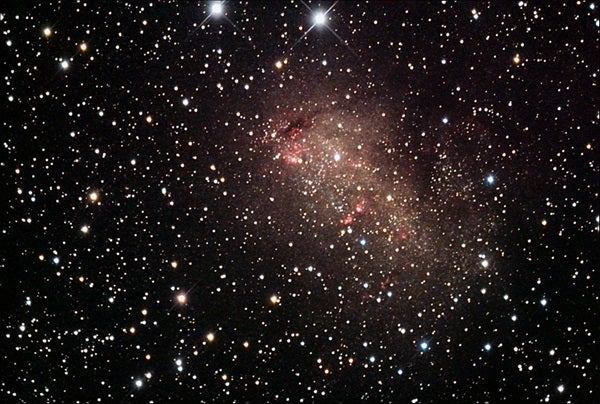The top two
To fully appreciate our first pair of targets, we have to visually dissolve M31 and focus our attention on its two diminutive attendants: the dwarf ellipticals M32 and NGC 205 (often erroneously referred to as M110). Both shine at 8th magnitude, but M32 is more obvious because it is more compact. Through a small telescope, it looks like a bloated star resting on M31’s bright southern rim.
Meanwhile, NGC 205, which lies 37′ northwest of M31’s nucleus, is an undisputed satellite of the Andromeda Galaxy. NGC 205 is the nearest example of a dwarf elliptical galaxy. And we may be seeing it approaching the disk of M31 for the first time in its 300-million-year orbit. The dwarf’s warped morphology already hints at an ongoing tidal warfare with its huge companion, which also appears to be stripping dust and gas from NGC 205. Telescopically, it appears larger, more elongated, and less compact than M32, making it a more difficult object to see, especially from light-polluted areas.
One tier down
The Andromeda Galaxy has two other bright dwarf companions: NGC 185 and NGC 147. Both are dwarf spheroidal galaxies that probably form a stable binary system orbiting M31. Each lies just over Andromeda’s border in Cassiopeia, some 7° north of M31.
To find them, look midway along an imaginary line drawn between M31 and magnitude 2.2 Schedar (Alpha [α] Cassiopeiae) for 5th-magnitude Omicron (ο) Cassiopeiae — the northern member of a chain of three stars (oriented north to south) that fits nicely in the same binocular field of view. NGC 185 is about 1° west of Omicron, and NGC 147 lies 1° farther to the west-northwest.
Lost in space
Our final target is the faintest of M31’s bright dwarf satellites: IC 10. This 10th-magnitude glow measures only 7′ in apparent extent and telescopically is nearly lost among the vast riches of the Milky Way in Cassiopeia. It is a small, lonely, low-surface-brightness patch about 1.5° east of magnitude 2.3 Caph (Beta [β] Cassiopeiae). Knowing exactly where to look is half the battle with this challenging treat. But I have seen it with quite an effort under dark Hawaiian skies through a 4-inch refractor at 74x.
Although IC 10 measures only about 5,000 light-years across, its star formation rate is one of the highest known for an irregular galaxy. As a final superlative, IC 10 contains the largest known stellar black hole — one having a mass between 23 and 34 times that of our Sun.
As always, send your observing reports and thoughts to sjomeara31@gmail.com.













